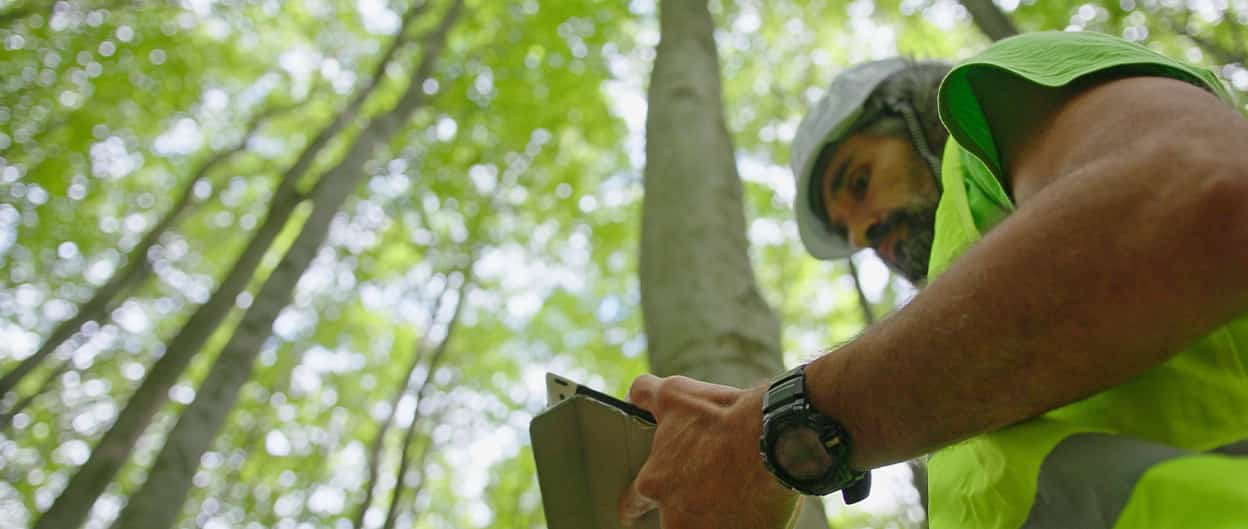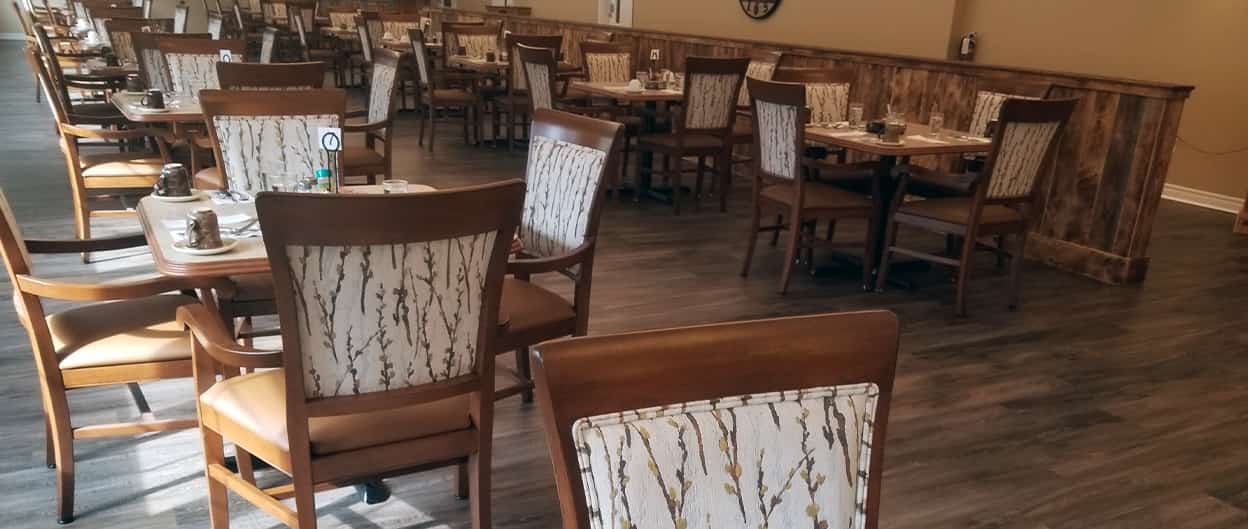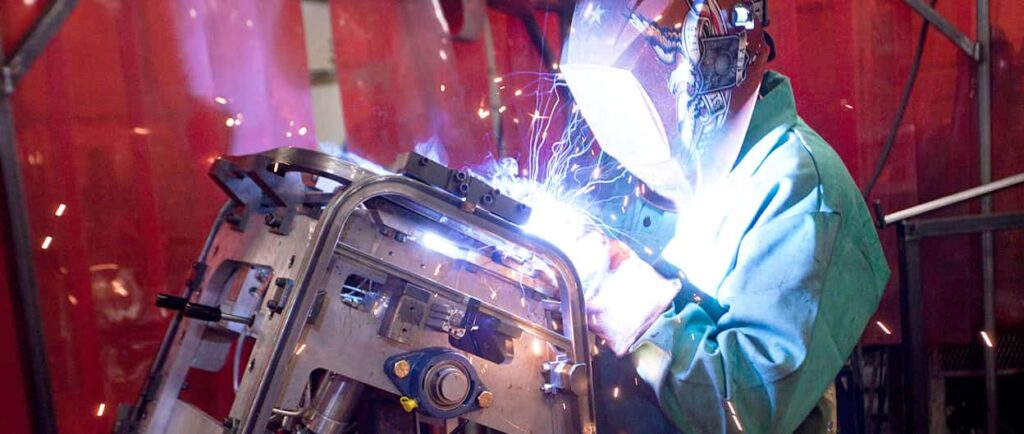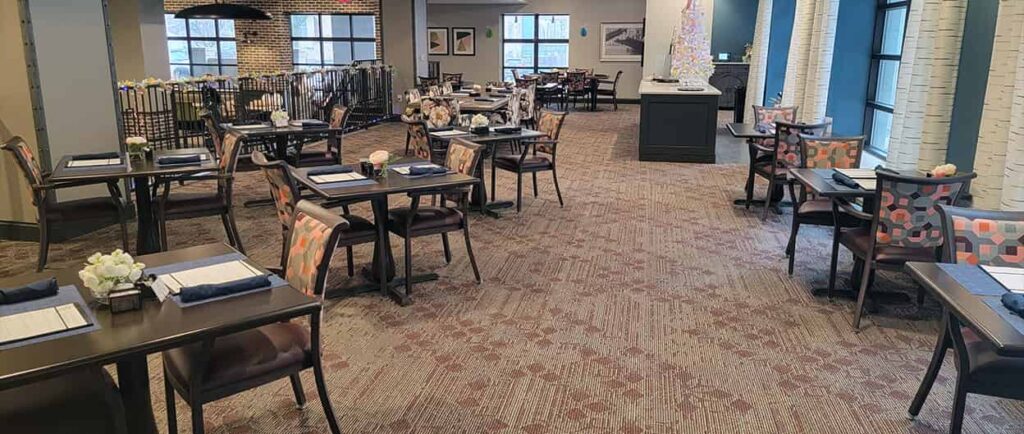Are you in the market for new chairs for your commercial property? When you’re choosing between hardwood chairs and faux wood chairs, there are several factors to consider. In this article, we will explore the pros and cons of both chair materials and offer recommendations for different commercial environments.
What’s Considered a Hardwood Chair?
When you are looking for a durable commercial furniture piece, be sure to check the type of wood used in its construction to ensure you are getting a quality piece of furniture that will last for many years. A hardwood chair is built with wood from a species of hardwood trees. Hardwood is preferable to softwood for commercial furniture because it’s more durable and can withstand heavy use over time. Furniture made of softwoods like pine, cedar, and Douglas fir are cheaper but won’t last as long as hardwood chairs and tables, particularly when subjected to the rigors of commercial use.

The most popular hardwoods used for chairs are oak, beechwood, maple, cherry, teak, and walnut. These woods are known for their strength, beauty, and ability to accept a variety of stains and finishes. In addition, many of these woods are eco-friendly building materials. Check to see if the furniture you’re buying is made with wood that has been sustainably harvested and is FSC-Certified.
Is It Hardwood or Softwood?
Hardwood chairs support more weight, are more durable, and are recommended for commercial use. While softwood can be beautiful, it is better suited to the lighter use of residential furniture.
Hardwood
- Beechwood
- Oak
- Maple
- Mahogany
- Teak
Softwood
- Pine
- Fir
- Cedar
- Redwood
What Is a Faux Wood Chair Made of?
A faux wood chair can be made of several types of materials, and many are recyclable. Some faux wood chairs feature aluminum or steel chair frames that are powder coated (sprayed with a coat of paint that’s baked onto the frame) to mimic the look of wood.
Other faux wood chairs are made with bits of recycled plywood, plastics, and other materials for a softer-touch imitation wood. This is sometimes called PVC-composite. It is either coated with a faux wood finish or colored and texturized during manufacturing to mimic the look of wood. Since it’s waterproof and UV-resistant, this type of faux wood is popular with outdoor furniture.
| Type of Faux Wood | Water Resistant | Lightweight |
|---|---|---|
| Powder coated Aluminum | ||
| Powder coated steel | ||
| Recycled wood chips, PVC plastic, and other materials |
Hardwood Chairs: Pros & Cons
Hardwood chairs are known for their durability and timeless appearance. They are often more expensive than faux wood chairs but can last for many years with proper care. Hardwood is often used for restaurant chairs because of the rich, natural beauty and rugged durability that natural wood offers.
Wood chairs and barstools can be refinished after years of wear for a fresh, new look. Paying to have your wood chairs refinished will cost approximately half as much as getting new chairs, so the higher upfront cost of hardwood is justifiable 20 years down the road, when you can get custom-refinished chairs for half the price of new.

Natural wood chairs, tables, and furnishings are also more temperature-stable than furniture made with a metal frame. For example, hardwood chair armrests will feel comfortable to the touch in warm or cold weather, but faux wood can feel uncomfortably hot in sunny rooms with direct sun or unpleasantly cold in winter months.
Pros of Hardwood Chairs
- Long-lasting (if properly cared for)
- Elegant and stately
- Warm to the touch
Cons of Hardwood Chairs
- Susceptible to damage from moisture & humidity
- Heavier than faux wood
On the downside, hardwood chairs are usually rather heavy and difficult to move around, making them less desirable for spaces that need to be rearranged frequently. If you are looking for event chairs, for instance, wood chairs will be heavier and will store less compactly than typical banquet chairs made with faux wood or metal chair frames. Real wood chairs are also susceptible to deep scratches and dents if not cared for properly.
Another disadvantage of wood used for hospitality, healthcare, and commercial dining chairs is that it can be damaged in humid or moist environments, by sea salt spray, and by chemical cleaners. If furniture will be subjected to frequent spills or harsh cleansers, faux wood chairs might be a better option.

Climate also plays into the equation. Because of wood’s susceptibility to moisture damage and rot, it can deteriorate and decay faster in humid climates. Many restaurants, resorts, and historic places that are located in humid climates install dehumidifiers to preserve wood flooring and furniture.
Faux Wood Chairs: Pros & Cons
Faux wood chairs, on the other hand, are more affordable than hardwood and can mimic the look of real wood. They are typically lighter in weight and easier to clean, making them a popular choice for high-traffic commercial areas. Faux wood event chairs are extremely popular because they are lighter weight than natural wood and easier to cart around and store.
Faux wood chairs are also resistant to the deep dents, nicks, and scratches that can ruin natural wood. Faux wood is also preferred in humid areas, since faux wood is moisture-resistant, making them ideal for outdoor spaces, dining areas, or environments with high humidity.
Pros of Hardwood Chairs
- Durable (if properly cared for)
- Lightweight and easy to move around
- Less expensive than hardwood
Cons of Hardwood Chairs
- Shorter lifespan than hardwood chairs
- Can’t be refinished
- Susceptible to small surface scratches
- Can feel cold in winter and hot in summer
However, faux wood chairs may not have the same longevity as hardwood chairs and can be prone to cracking or fading over time. Surface scratches can crop up easily if they aren’t cared for properly. You can preserve the beauty of your faux wood chairs by using a cart that will protect the chairs from scratching against each other. They also lack the natural beauty and charm of real wood.

Best Chairs for Commercial Areas
When it comes to choosing between hardwood and faux wood chairs for your commercial space, consider the specific needs of the environment. For areas that require durability and a classic appearance, such as restaurants, hotels, or offices, hardwood chairs may be the best option. On the other hand, faux wood chairs may be more suitable for spaces that need lightweight and easy-to-clean furniture, such as hospitals, senior care centers, medical offices, or outdoor areas.
When you are selecting commercial seating, take the climate of the facility into account. In extremely humid environments or oceanside locations where moisture can be a concern, faux wood chairs may be the better choice due to their resistance to water damage. In temperate climates and in hot, dry locations, natural wood furniture can last for 20 years or longer.

In conclusion, both hardwood and faux wood chairs have their own advantages and disadvantages. The best choice for your commercial environment will depend on your specific needs and budget. By weighing the pros and cons of each type of furniture and considering the unique requirements of your space, you can make an informed decision that will enhance the look and functionality of your business.
Remember, when choosing between hardwood chairs and faux wood chairs for commercial environments, consider factors such as durability, maintenance, weight, appearance, and climate suitability to make the best choice for your space.

The Final Verdict
When selecting chairs for commercial environments, your decision between hardwood and faux wood furniture can seem like a tough one. Both options have advantages and disadvantages, so it’s essential to consider your specific needs and requirements before making a choice.
Whether you opt for the timeless elegance of hardwood or the practicality of faux wood, selecting the right chairs can make a significant impact on the overall look and feel of your space. Make sure to take all factors into account and choose furniture that will not only be aesthetically pleasing but also functional and durable in the long run.
In the end, the choice between hardwood and faux wood chairs in commercial environments ultimately comes down to your specific needs, budget, and climate considerations. Do your research, weigh the pros and cons, and make a decision that will provide the best combination of style, durability, and practicality for your business.